This article was co-authored by Roy Nattiv, MD. Dr. Roy Nattiv is a Board-Certified Pediatric Gastroenterologist in Los Angeles, California. With over 20 years of experience he specializes in a broad range of pediatric gastrointestinal and nutritional illnesses such as constipation, diarrhea, reflux, food allergies, poor weight gain, SIBO, IBD, and IBS. He completed his pediatric residency at the Children’s Hospital at Montefiore, Albert Einstein College of Medicine in New York, and his fellowship at the University of California, San Francisco (UCSF). While at UCSF, he was a California Institute of Regenerative Medicine (CIRM) fellowship trainee and was awarded the North American Society for Pediatric Gastroenterology, Hepatology, and Nutrition (NASPGHAN) Fellow to Faculty Award in Pediatric IBD Research. Dr. Nattiv received his undergrad degree from the University of California, Berkeley, and his medical degree (MD) from the Sackler School of Medicine in Tel Aviv, Israel.
There are 12 references cited in this article, which can be found at the bottom of the page.
wikiHow marks an article as reader-approved once it receives enough positive feedback. In this case, 90% of readers who voted found the article helpful, earning it our reader-approved status.
This article has been viewed 119,527 times.
A hernia occurs when an organ pushes through an opening in the muscle or tissue that holds it in place. For example, the intestines may break through a weakened area in the abdominal wall. Hernias are most common in the abdomen, however, they can also appear in the upper thigh, belly button, and groin area. Surgery is the only treatment used to repair a hernia.[1] One common problem a post hernia surgery patient may develop is constipation as a result of the general anesthesia given to them during surgery. Constipation happens when you only have three bowel movements a week and is also a common side effect of some medications such as antacids (medicine for indigestion), antidepressants, anti-epileptics, calcium and iron supplements, antipsychotics, opiate painkillers (morphine and codeine) and diuretics.[2]
Steps
Part 1: Modifying Your Lifestyle and Your Diet
-
1Drink eight or more glasses of water a day. Constipation usually occurs because there is an insufficient amount of water in your stool, making it hard and difficult to pass. This happens when the peristalsis (muscle contractions)[3] of the intestines stops due to the effect of the general anesthesia used during hernia surgery.
- Increasing your fluid intake may help to soften the stool and prevent you from straining during a bowel movement.
-
2Eat a high fiber diet. Fiber-rich food prevents constipation by pulling water from the colon, which makes the stool softer and easier to pass.
- Make sure you have a daily fiber intake of at least 21 grams[4] by eating foods like: raspberries, apples, pears, bananas, oranges, figs, strawberries, raisins, popcorn, brown rice, barley, oatmeal, bread, lentils, almonds, pistachios, green peas, broccoli, turnips, brussel sprouts, tomatoes, carrots and potatoes.
- You can also take Metamucil, a fiber laxative and supplement. Metamucil can be taken after eating or on an empty stomach. Have a glass of water after you drink Metamucil for better absorption.
- Men, 19 years and older can take 38 g/day. Women, 19 years and older can take 25 g/day. Pregnant and lactating women should consult with their doctor before taking Metamucil. Pregnant woman are usually prescribed 28 g/day and lactating women are usually prescribed 29 g/day.[5]
- If approved by their doctor, children can also take Metamucil. Children 1-3 years old can take 19 g/day; children 4-8 years old can take 25 g/day. Boys 9-13 years old can take 31 g/day; girls 9-13 years old can take 26 g/day. Boys 14-18 years old can take 38 g/day and girls 14-18 years old can take 26 g/day.[6]
Advertisement -
3Avoid straining yourself or picking up heavy objects. You do not want to strain yourself or lift heavy objects, especially the first few weeks after surgery, as this can cause the surgical incisions to tear.
-
4Do light exercise. Light exercise like walking will help to reduce the time it takes for food to move into the large intestine. This will ensure the water absorbed from the stool is limited. Exercises also stimulate the natural contraction of the muscles in the gastrointestinal tract. If these muscles contract efficiently, the stools will move out much quicker.
- Exercise an hour after a meal as this will force blood flow to increase towards the stomach and the intestines, which will then help your body to properly digest the food.[7] Walk for at least 15-30 minutes a day at a slow pace so you do not disrupt the surgical site.[8]
- Do not do any strenuous activities like running, jogging, or playing contact sports during the first four weeks after surgery, as these actions can possibly rupture the surgical incision.
- Bedridden patients can dangle their feet on the bed and do arm and feet circling for at least 30 to 45 minutes daily to help promote the return of peristalsis (muscle contractions) in the gastrointestinal tract.[9] The early return of peristalsis can help reduce constipation.
-
5Stop smoking. Smoking cigarettes can further reduce the peristaltic movement of the intestines, which are already depressed due to the general anesthesia used during hernia surgery. The nicotine in cigarettes is a potent vasoconstrictor, which means it makes your blood vessels constrict or narrow, thus reducing blood flow to the intestines.
- If blood flow is reduced, then digestion and peristalsis or the rhythmic movement of the intestines are also reduced. This causes the digested food to remain in the intestines for a longer period of time. During this time, the colon continues to absorb water from the digested food, which will lead to a firmer or hard stool and constipation.
-
6Talk to your doctor about Colace, the most recommended stool softener. Do not self-medicate. Some stool softeners can cause intestinal bleeding, dependency and can alter the normal environment of the gastrointestinal tract if they are used for too long. Consulting with your doctor will help you find the right stool softener to treat your constipation.
-
7Ask your doctor about other brands of stool softener like Senna (Senokot, Ex-Lax) and Bisacodyl (Correctol, Doxidan, Dulcolax). The prescribed adult dose (19 and older) for Senna is two tablets (17.2 mg) orally at bedtime once a day, with or without food. Do not exceed two tablets a day and do not take Senna for more than a week, unless otherwise prescribed by your doctor.
- These are known as stimulant laxatives. They work more quickly, but they have a higher addictive potential.[13]
- Patients 2-6 years old should take half a tablet (4.3 mg) of Senna orally at bedtime, and not exceed half a tablet a day. Patients 6-12 years old should take one tablet (8.6 mg) orally at bedtime and not exceed one tablet a day. Patients 13-18 years old should take two tablets (17.2 mg) orally at bedtime and should not exceed four tablets a day.
- Senna should only used by pregnant and breastfeeding women if it is prescribed by their doctor.[14]
- The prescribed adult dose (18 and older) for Bisacodyl is usually 5 to 15 mg (1 to 3 tablets) orally once a day, with or without food. Do not exceed more than 15 mg a day.
- Children under 18 and pregnant and breastfeeding women are usually not prescribed with this medication unless otherwise prescribed by the doctor.
-
8Let your doctor know if you are taking other drugs or medications. Taking laxatives can affect your body’s ability to absorb other drugs such as antacids, mineral oils, castor oils, antibiotics, blood thinners, heart and bone medications, so always check with your doctor to find the right laxative prescription for you.[15]
Part 2: Seeking Medical Assistance for Constipation
-
1Check for blood in your stool. The pressure of straining during a bowel movement can damage or reopen the wound in your hernia, resulting in blood in your stool.
-
2Notice if you have a sharp or excruciating pain in your anus when trying to move your bowels. Prolonged straining may cause swelling in the veins of the anus. This can also tear the anal structure, especially if a large and hard stool is passed.
-
3Contact your doctor if you experience symptoms like fever, swelling and/or bleeding in the surgical site, excessive sweating, or worsening pain. These may all be signs of an infection.[16]
-
4Get medical attention if you experience severe abdominal pain. When stools are not passed, they stay in the intestines and can block the intestinal opening. This leads to an accumulation of more stools in the impacted part of the intestines and can restrict blood flow, thereby killing the tissues in it. If this occurs, the surrounding pain receptors will be activated and you will likely experience unbearable or excruciating pain.
Part 3: Identifying the Different Types of Hernias
-
1Recognize the most common type of hernia, an inguinal hernia. An inguinal hernia is common in men because the inguinal canal does not close properly, creating a weakened spot that is prone to hernias. Normally, a man’s testicles descend through the inguinal canal shortly after birth and the canal closes almost completely behind them. An inguinal hernia develops when the intestines push through the inguinal canal.
- In men and women, the inguinal canal is found in the groin area. In men, it is the area where the spermatic cord, which holds up the testicles, passes from the abdomen to the scrotum. In women, the inguinal canal contains a ligament that helps to hold the uterus in place.
-
2If part of your stomach protrudes through your diaphragm into your chest, you may have a hiatal hernia. This type of hernia causes gastroesophageal reflux, a burning sensation that occurs due to the leakage of a person’s stomach contents back into their esophagus.
- A hiatal hernia is most common in people over 50 years old.
- Congenital birth defects may cause a child to develop a hiatal hernia.
-
3Get your infant checked for an umbilical hernia. Babies under six months old develop an umbilical hernia if their intestines protrude through the abdominal wall near the belly button. If you notice a bulge or swelling near your child’s belly button when he cries, he may have an umbilical hernia.
- Umbilical hernias usually go away on their own, once the child reaches one year old.
- If the hernia is still present after the child turns one, surgery will be required to correct the hernia.
-
4If you have recently had abdominal surgery, be wary of an incisional hernia. An incisional hernia occurs when the intestines push through an incision scar or weakened tissue after abdominal surgery.
Part 4: Understanding the Surgical Removal of a Hernia (Herniorrhaphy)
-
1If possible, get a laparoscopic surgery. This type of surgery causes less damage to the surrounding tissue and requires a shorter recovery period. However, there is a risk of hernia recurrence.
- This procedure uses a tiny camera and miniaturized surgical equipment to repair the hernia using small incisions. The hernia is repaired by sewing the hole to close the abdominal wall. A surgical mesh is also used to patch the hole.
-
2If you have intestinal movement, you will need open surgery. This type of surgery is done for hernias where a portion of the intestines has moved down into the scrotum. A part of the scrotum or groin may be incised to retrieve and reposition the intestine. Then, it is closed using stitches.
- Open surgery requires a longer recovery process. But, the patient can resume his normal daily activities six weeks after surgery.
-
3Remember that you will be under local or general anesthesia during the surgery. Hernia surgery is usually performed as an outpatient procedure. The surgeon repositions the herniated tissue and, if strangulation has occurred, removes the oxygen-starved part of the organ. The damaged muscle wall will frequently be repaired with synthetic mesh or tissue.
References
- ↑ http://www.nlm.nih.gov/medlineplus/hernia.html
- ↑ http://www.nhs.uk/Conditions/Constipation/Pages/Causes.aspx
- ↑ http://www.nlm.nih.gov/medlineplus/ency/article/002282.htm
- ↑ https://pubmed.ncbi.nlm.nih.gov/31126110/
- ↑ http://www.drugs.com/dosage/psyllium.html#Usual_Adult_Dose_for_Constipation
- ↑ http://www.drugs.com/dosage/psyllium.html#Usual_Adult_Dose_for_Constipation
- ↑ https://www.abc.net.au/health/talkinghealth/factbuster/stories/2012/07/18/3548098.htm
- ↑ http://www.yourhernia.com/yourhernia/pagebuilder.aspx?page=Site:Recovery&topicID=168022
- ↑ http://jpet.aspetjournals.org/content/27/1/41
- ↑ Roy Nattiv, MD. Board Certified Gastroenterologist. Expert Interview. 18 December 2020.
- ↑ http://www.drugs.com/cdi/colace.html
- ↑ Roy Nattiv, MD. Board Certified Gastroenterologist. Expert Interview. 18 December 2020.
- ↑ Roy Nattiv, MD. Board Certified Gastroenterologist. Expert Interview. 18 December 2020.
- ↑ http://www.drugs.com/senna.html
- ↑ https://pubmed.ncbi.nlm.nih.gov/2370432/
- ↑ http://www.nlm.nih.gov/medlineplus/hernia.html
About This Article
Having constipation after your hernia surgery can be uncomfortable, but you can relieve your symptoms with a few simple lifestyle changes. Drink at least 8 glasses of water a day, which should soften your stool and make it easier to pass. Eat plenty of foods high in fiber, like apples, bananas, bread, popcorn, and tomatoes. You can also take a walk or do some other light exercise to help your digestive system. If nothing works, talk to your doctor about stool softeners. Don’t take these of your own accord, since they can have negative side effects. If you experience fever, swelling, or bleeding where your hernia was at any point, contact your doctor. For more tips, including how to identify different types of hernias, read on.





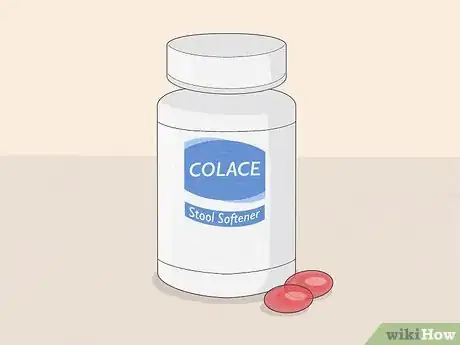



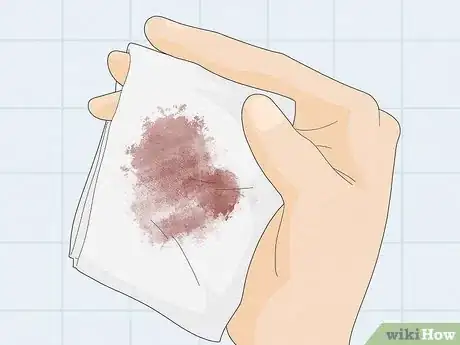



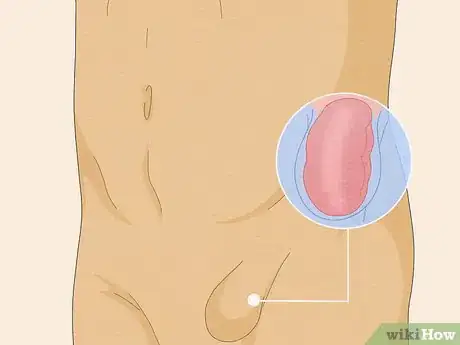
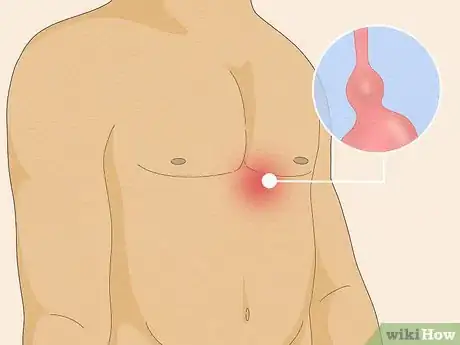
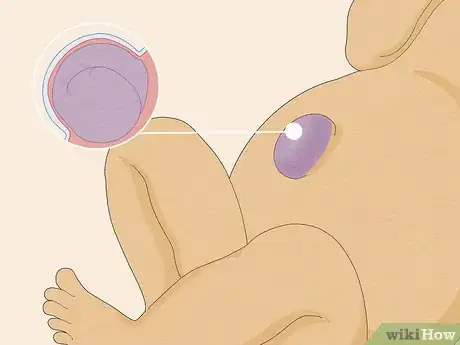

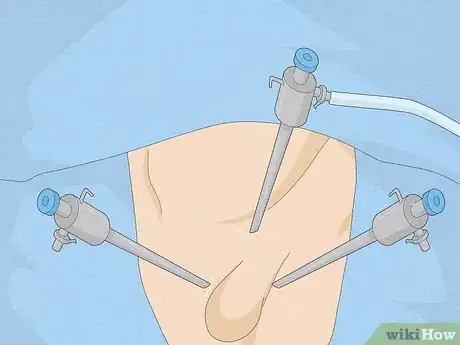
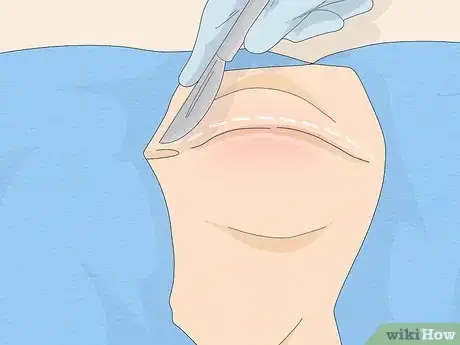
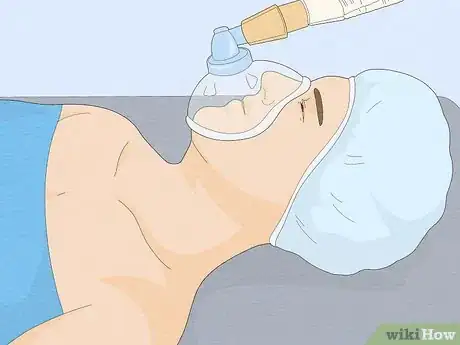


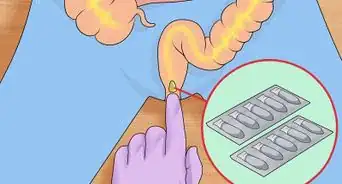




















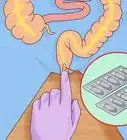




































Medical Disclaimer
The content of this article is not intended to be a substitute for professional medical advice, examination, diagnosis, or treatment. You should always contact your doctor or other qualified healthcare professional before starting, changing, or stopping any kind of health treatment.
Read More...